Teaching reading comprehension can be one of the BIGGEST challenges we face as reading teachers… yet it is one of the most important parts of our reading instruction.
Without comprehension, there really isn’t any reading that is taking place…
In order to be successful life-long readers, our students MUST be able to understand what it is they are reading. And one of the ways we can boost comprehension (understanding) is to teach students a wide range of comprehension skills and strategies.
When I was teaching in the classroom I would often encounter some of the following challenges when trying to teach comprehension… I’m curious if you’ve ever experienced any of these:
I had students that could read ANY level of text fluently and accurately, but they had NO idea what the text was about.
I had students that could apply reading comprehension strategies to SOME texts and not others.
I had students that could correctly answer multiple choice comprehension questions, but couldn’t discuss a text in any sort of meaningful way.
And then I had students that could actively participate in any whole group or small group discussion about a text, but when it came to their independent reading they were lost.
Do any of those challenges ring a bell?
And I’m sure there are other challenges you’ve faced.
But even though teaching reading comprehension can be challenging, we have to continue to seek out strategies and ideas that will help us improve our comprehension instruction.
So today, I’m going to share 5 tips to help you effectively teach reading comprehension skills and strategies to your students.

1. Give students a purpose for learning the strategy:
This might seem obvious, but it’s one of those things we often forget… as teachers it is usually really clear what the purpose of our lesson is, but that’s because we know the end goal for our students.
But for our students, they don’t always understand the WHY or the HOW of the lesson. It’s so important that our students know exactly HOW a reading comprehension skill or strategy will help them. The more likely they understand HOW it will help, the more likely they are to put in the work to master that skill or strategy.
And here is the thing…
A purpose for learning a strategy can be really simple and straight forward.
This strategy could help them understand their independent reading text
It could help them become stronger with other reading strategies
It could help them prepare for a book talk
It could help them prepare for a book club
This is as simple as adding a sentence that names a purpose of that strategy anytime you’re teaching comprehension…
Today we are going to be learning a strategy to help us summarize. And this is important because it will help you remember the most important details of any text you have read… and if you take the time to read something, you probably want to remember it.
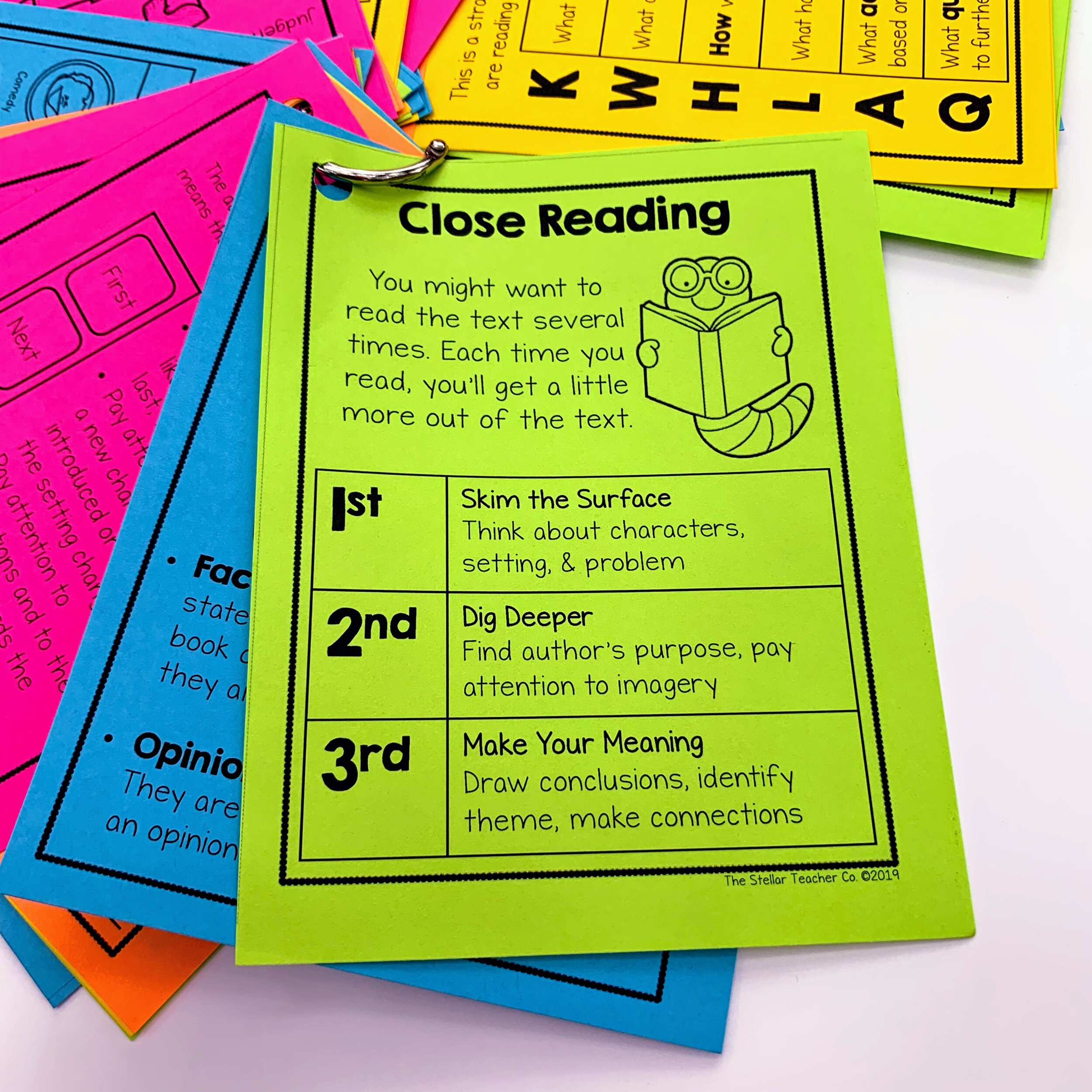
2. Give students a PROCESS for applying the strategy.
The ultimate goal of strategy instruction is to help students transfer the reading comprehension strategy to their independent reading.
This means we need to make sure we are explaining how students can apply this strategy to their independent reading… when they sit down to read independently, they need to know exactly what to do in order to apply that strategy independently.
When I first started teaching reading, I used a basal reading program and the goal seemed to be to help students UNDERSTAND that specific story… and we would talk about comprehension and talk about the skills, but with the goal of understanding our weekly story….
Eventually when I moved to the workshop model, I focused more on skill/strategy based mini-lessons… But looking back at my first year or two using the workshop model, I realized that so much of my instruction was spent DESCRIBING or DEFINING what a reading skill or strategy is….
Today we are going to talk about summarizing. When you summarize, you focus on sharing only the most important details from the beginning, middle, and end of the story.
WHILE that is a great student friendly definition of what it means to summarize, it doesn’t tell students what they should do when they sit down to read independently… which is what we want them to do.
So when you are preparing your mini-lesson, you want to make sure that you are teaching students a process that they can easily apply on their own. Some examples might be:
Teach students to use the formula SWBST to summarize. They know to identify each of the letters and put them together to write a summary.
Teach students to keep a list of details to “keep or toss”. They know to create a t-chart and categorize details as they read. All the details in the keep column get included in the summary.
Teach students to categorize details as important or interesting. Students know to only include the important details in their summary.
With all of these strategies, students know exactly what they need to do if they wanted to apply that strategy to their independent reading.
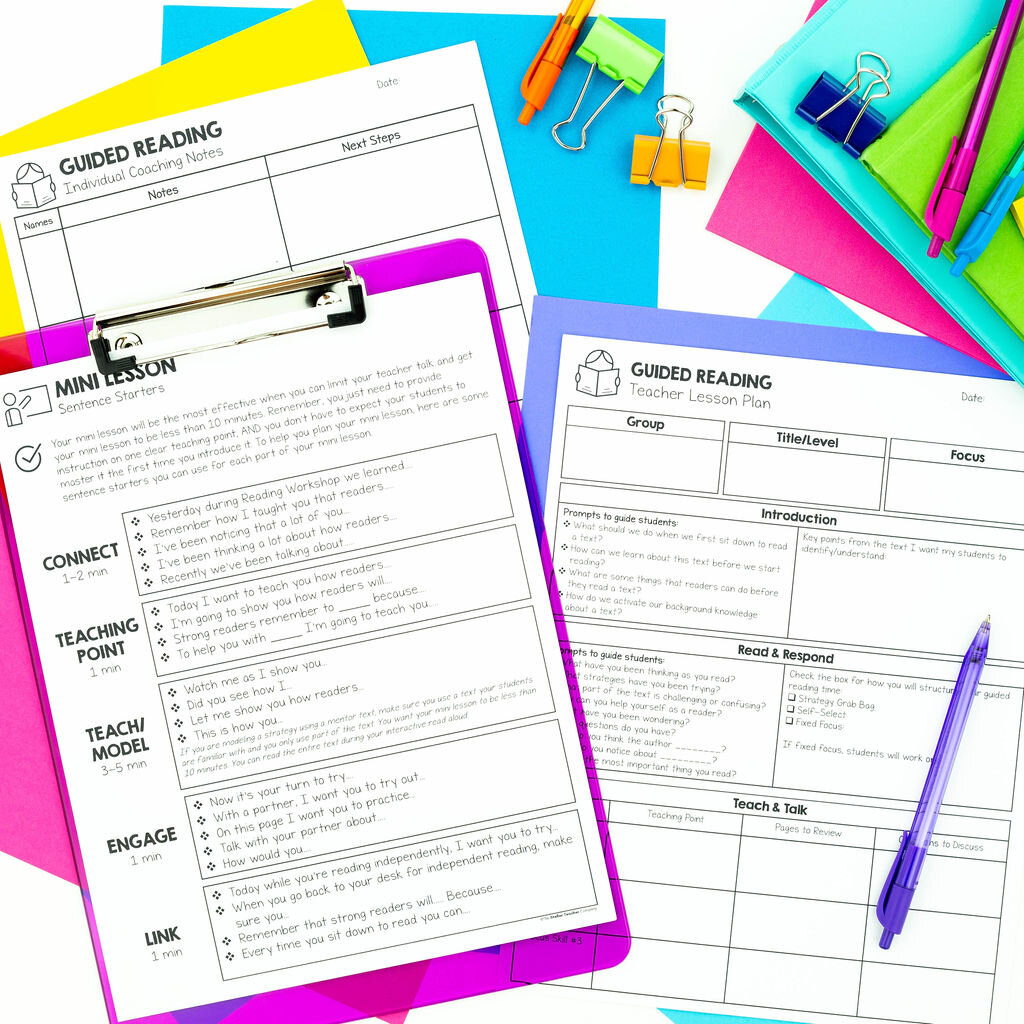
3. Model this strategy in a variety of ways:
Model. Model. Model. I always tell teachers that mastery doesn’t happen after one lesson. So often we get impatient for our students to master a skill and we expect that just because we taught it ONCE, our students should remember it forever.
Our students have until the end of the year to master the skills and strategies imbedded in the standards.
This means we need to continue to model how those skills and strategies look while we are reading.
During your reading block try to…
Model strategies during your whole group mini-lesson
Model strategies during guided reading and strategy groups
Model strategies during one-on-one reading conferences.
You can even let students model strategy use for each other.
Basically, the more modeling the better.
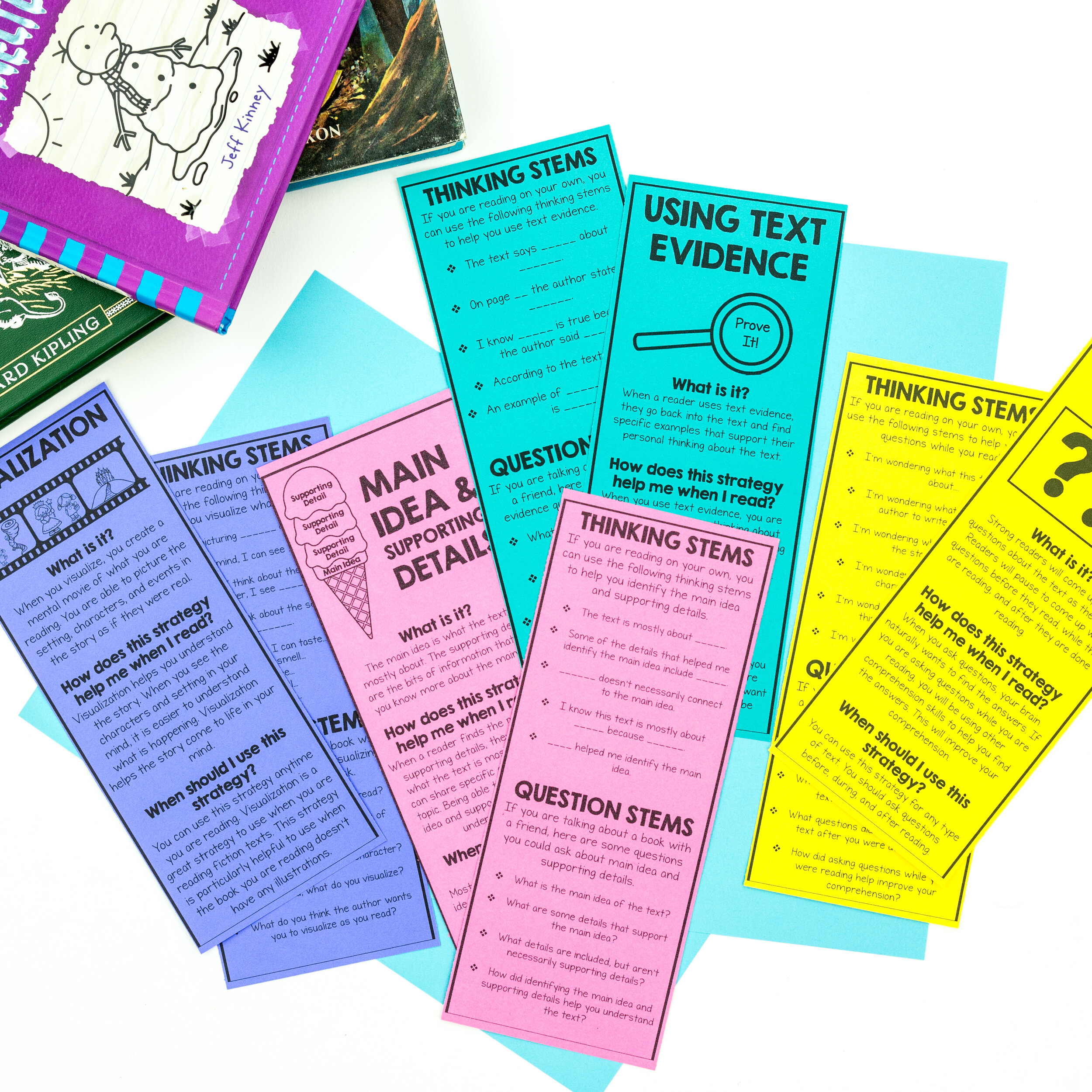
4. Give students the tools to be successful independently
So once students have a clear purpose, they know the process, and they’ve seen you model like crazy, they need to have the tools to successfully implement that strategy on their own.
I love giving students a variety of tools related to reading comprehension that they can refer to during independent reading. Not every student will need or use every tool, but the more tools you share with your students the more likely they are to find one that works perfectly for them.
Here are some of my “must have” reading comprehension tools to share with students:
- Mini Anchor Charts – I love giving students a smaller version of the anchor chart we used during the whole group mini-lesson to glue in their reading journals. It can be super helpful for students to be able to refer back to these charts during independent practice or workstations.
- Question Stems – I love sharing students specific questions they can ask to apply certain comprehension skills or strategies. If they know WHAT questions they should be asking, they will be more more likely to successfully apply certain skills.
- Graphic Organizers – While I love sharing “ready to print” graphic organizers with my students, I also like to teach them HOW to draw a graphic organizer for each skill or strategy. This way no matter what is in front of them, they can create a visual template to help them apply the strategy.
- Reading Reference Sheets – I bet in upper elementary you are teaching your students A LOT of reading content. Students need to know a ton of academic vocabulary to be successful readers in school. It can be helpful to give students an “all-in-one” set of reference sheets to be able to refer to if they happen to forget an academic vocabulary term connected to reading comprehension.
- Strategy Rings– I like to give students a ring with little strategy cards (basically mini-mini-mini anchor charts) that have a process for each strategy written out. That way if they forget a strategy they can refer to their strategy ring to be reminded of how to get started.
There are tons of other resources you can give students, but remember to consider if the tools you are sharing with them will help them be successful while independently reading.

5. Don’t talk about reading strategies in isolation
One of the things that is tricky about teaching reading is that we tend to teach skills in isolation.
We spend a week doing mini-lessons on summarizing or we teach character traits for a few days and then move on to teaching theme.
There isn’t anything WRONG with this approach, but we need to make sure students realize that there is such a strong connection to all the reading skills.
We don’t ever just apply a reading strategy in isolation. We use multiple strategies all throughout our reading to help us make meaning.
I think it’s important for students to see and understand how all of the strategies work together.
One thing I like to do with my students is to create a strategy web. As your teaching a strategy/skill. Add it to the web and connect it to ALL the other skills that students use when reading.
For example. When you are teaching inferences, help students realize that they have to use soooo many other skills/strategies when they are making inferences… students need to access background knowledge, make connections, ask questions, make predictions, understand genre and text structure…. and even more.
The more students realize that all the reading skills are connected, the better their comprehension will be and the more confident they will be in their reading ability.
So, even though teaching reading comprehension can be challenging, hopefully you have a few ideas on how you can make your instruction even more effective.
Happy Teaching!
Small Group Lesson – Inferring Character Traits
Are you ready to get started with small group lessons, but not exactly sure what to do with your students once you get them to your small group table? I’ve been there. One of the things that helped me with my small group lessons was having a super simple framework that I could use for my small group lessons no matter the level of my students or the focus for our lesson.
When it comes to teaching small groups, I like to use what I call the 4T Model: Target, Teach, Tackle, Transfer.
👇 Grab this free download to learn more about how you can use the 4T Model with your small groups.
In this free download, you’ll get:
• A teacher guide to explain the 4T model
• Lesson plan template + sentence starts
• Sample lesson + materials for inferring character traits
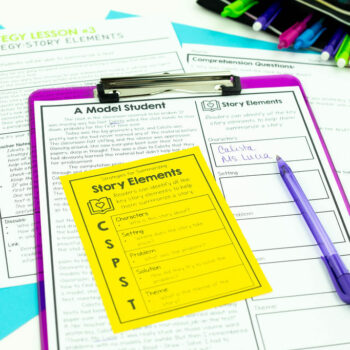
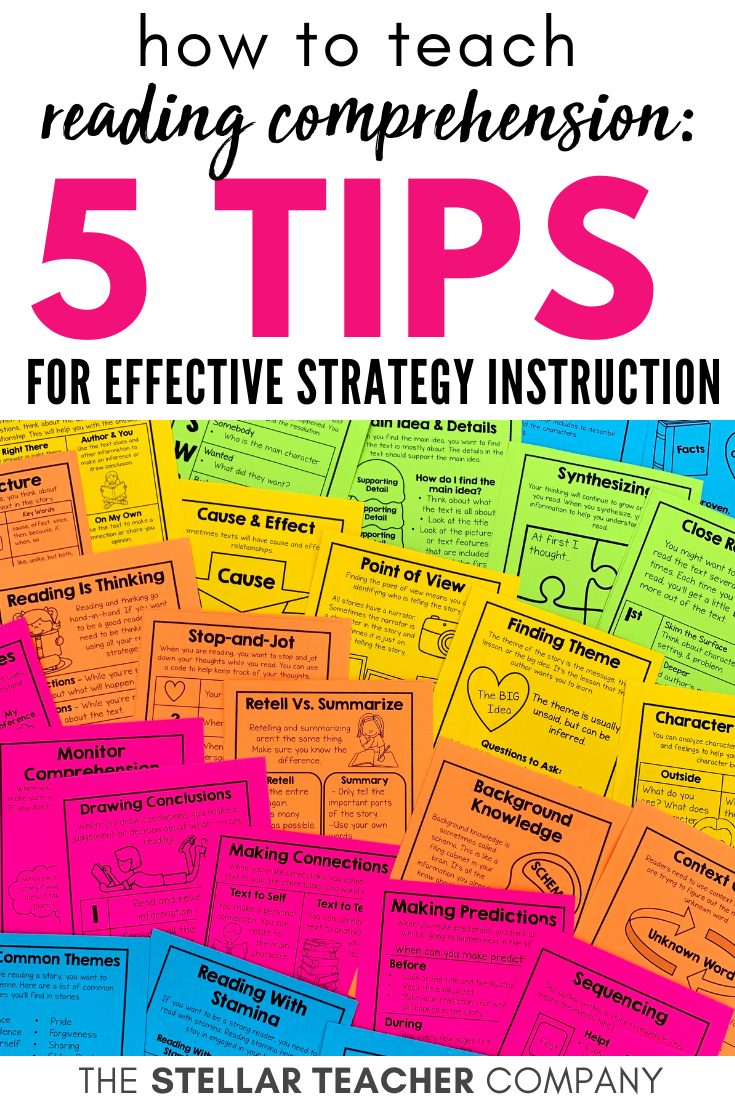



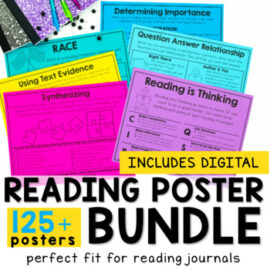
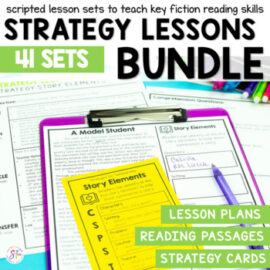






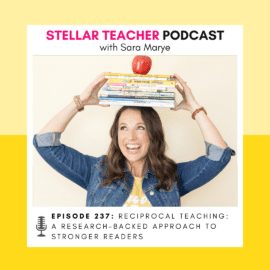


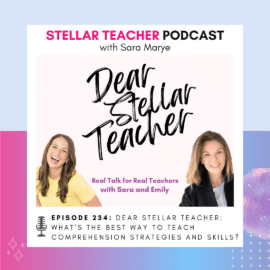



Leave a Comment
You must be logged in to post a comment.